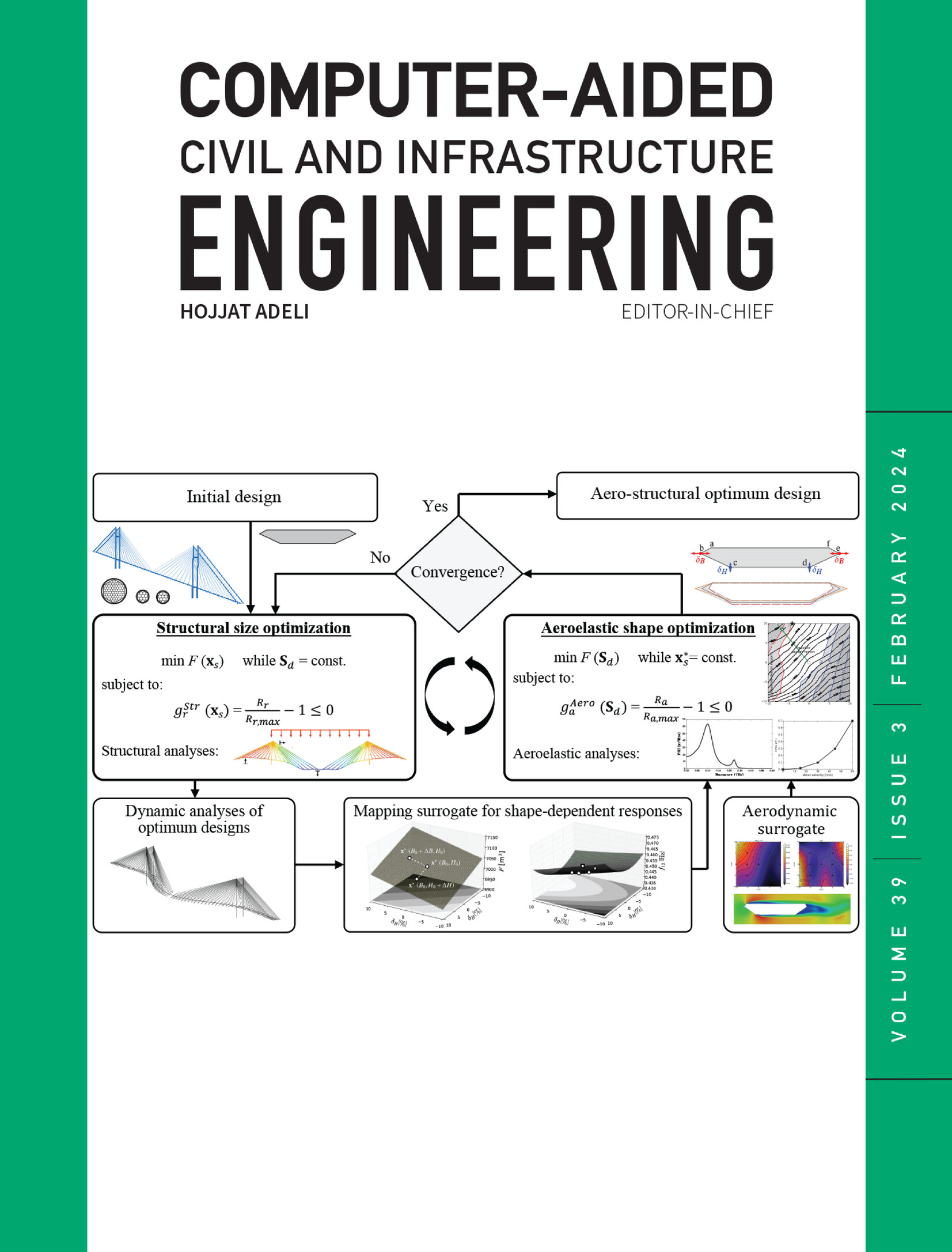基于大规模合成降水和淹没数据的生成式机器学习的高分辨率洪水概率映射
IF 8.5
1区 工程技术
Q1 COMPUTER SCIENCE, INTERDISCIPLINARY APPLICATIONS
引用次数: 0
摘要
高分辨率洪水概率图是评估洪水风险的工具,但往往受到历史数据可用性的限制。此外,使用基于物理的模型生成创建概率洪水图所需的模拟数据需要大量的计算和时间,这限制了其可行性。为了解决这一差距,本研究引入了降水-洪水深度生成管道,这是一种利用生成式机器学习生成大规模合成洪水数据以生成概率洪水图的新方法。以德克萨斯州哈里斯县为重点,降水-洪水深度生成管道首先使用一系列降水-洪水事件模型和基于物理的模型训练一个单元智能深度估计器。这种基于单元的深度估计器强调基于降水的特征,优于通用模型。随后,使用条件生成对抗网络(CTGAN)有条件地生成合成降水点云,并使用策略阈值对其进行过滤,使其与实际降水模式保持一致。因此,为每个单元构建降水特征池,实现策略性采样和合成降水事件的生成。在生成10,000个合成事件后,创建了不同淹没深度的洪水概率图。使用相似度和相关性度量的验证证实了合成深度分布的准确性。降水-洪水深度生成管道提供了一种可扩展的解决方案,可以生成高分辨率洪水概率图所需的合成洪水深度数据,从而增强洪水减灾规划。本文章由计算机程序翻译,如有差异,请以英文原文为准。
High-resolution flood probability mapping using generative machine learning with large-scale synthetic precipitation and inundation data
High-resolution flood probability maps are instrumental for assessing flood risk but are often limited by the availability of historical data. Additionally, producing simulated data needed for creating probabilistic flood maps using physics-based models involves significant computation and time effort, which inhibit its feasibility. To address this gap, this study introduces Precipitation-Flood Depth Generative Pipeline, a novel methodology that leverages generative machine learning to generate large-scale synthetic inundation data to produce probabilistic flood maps. With a focus on Harris County, Texas, Precipitation-Flood Depth Generative Pipeline begins with training a cell-wise depth estimator using a number of precipitation-flood events model with a physics-based model. This cell-wise depth estimator, which emphasizes precipitation-based features, outperforms universal models. Subsequently, the conditional generative adversarial network (CTGAN) is used to conditionally generate synthetic precipitation point cloud, which are filtered using strategic thresholds to align with realistic precipitation patterns. Hence, a precipitation feature pool is constructed for each cell, enabling strategic sampling and the generation of synthetic precipitation events. After generating 10,000 synthetic events, flood probability maps are created for various inundation depths. Validation using similarity and correlation metrics confirms the accuracy of the synthetic depth distributions. The Precipitation-Flood Depth Generative Pipeline provides a scalable solution to generate synthetic flood depth data needed for high-resolution flood probability maps, which can enhance flood mitigation planning.
求助全文
通过发布文献求助,成功后即可免费获取论文全文。
去求助
来源期刊
CiteScore
17.60
自引率
19.80%
发文量
146
审稿时长
1 months
期刊介绍:
Computer-Aided Civil and Infrastructure Engineering stands as a scholarly, peer-reviewed archival journal, serving as a vital link between advancements in computer technology and civil and infrastructure engineering. The journal serves as a distinctive platform for the publication of original articles, spotlighting novel computational techniques and inventive applications of computers. Specifically, it concentrates on recent progress in computer and information technologies, fostering the development and application of emerging computing paradigms.
Encompassing a broad scope, the journal addresses bridge, construction, environmental, highway, geotechnical, structural, transportation, and water resources engineering. It extends its reach to the management of infrastructure systems, covering domains such as highways, bridges, pavements, airports, and utilities. The journal delves into areas like artificial intelligence, cognitive modeling, concurrent engineering, database management, distributed computing, evolutionary computing, fuzzy logic, genetic algorithms, geometric modeling, internet-based technologies, knowledge discovery and engineering, machine learning, mobile computing, multimedia technologies, networking, neural network computing, optimization and search, parallel processing, robotics, smart structures, software engineering, virtual reality, and visualization techniques.

 求助内容:
求助内容: 应助结果提醒方式:
应助结果提醒方式:


